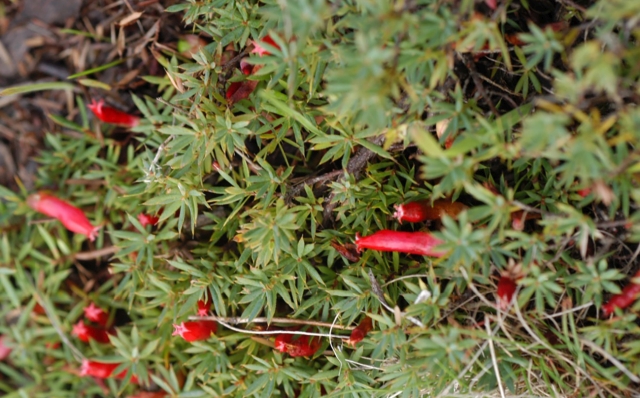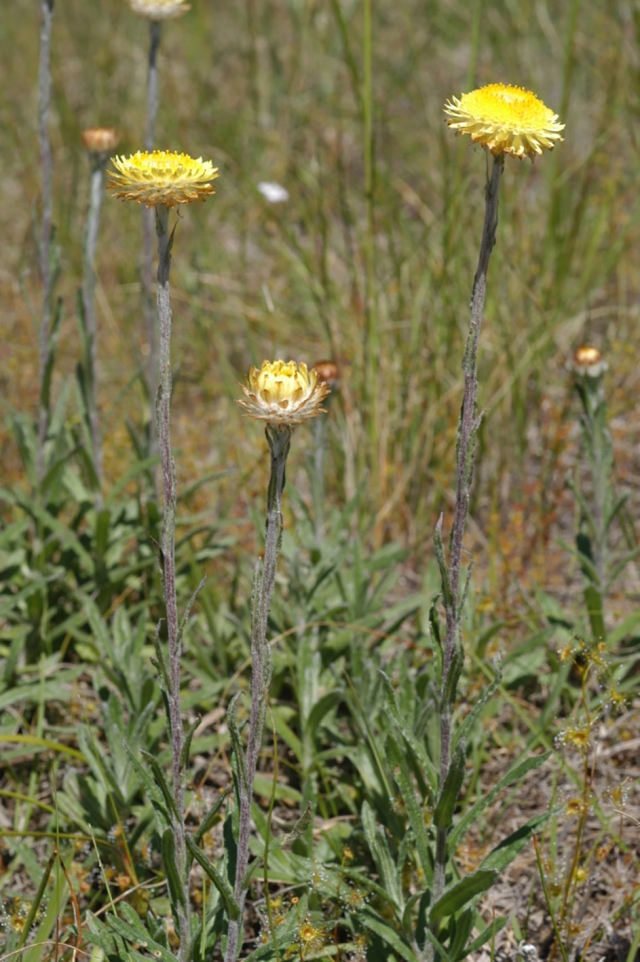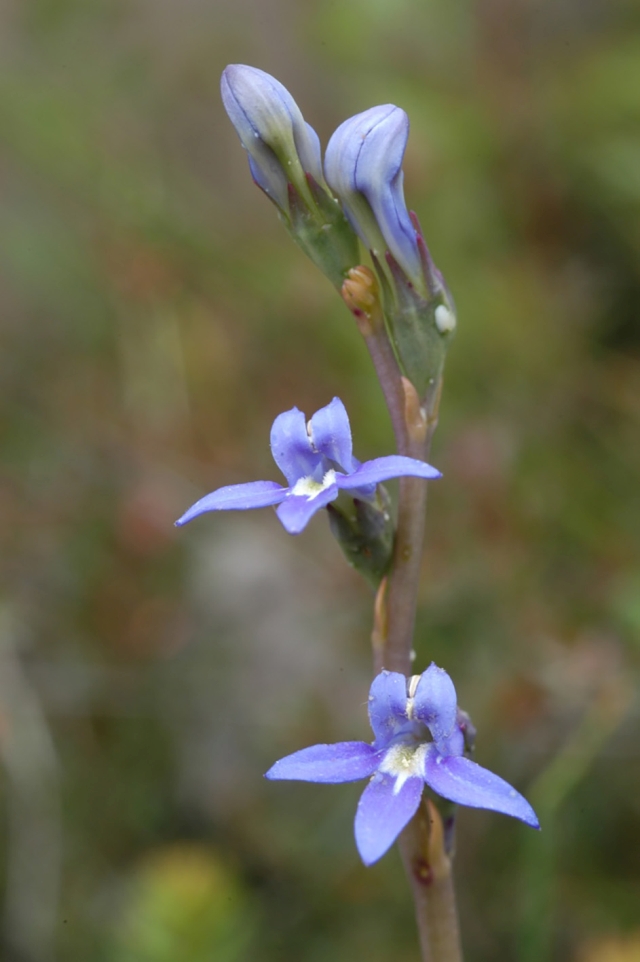It is now the middle of autumn, and as you look around the bush there is not a mass of colour to be seen. Instead of flowers, there are now many seed heads that come in various forms such as capsules, follicles, pods, awned seeds, and winged seeds.
These different arrangements for the protection and distribution of their precious contents all aid the germination and renewal of the bush and the coming climax of colour in the springtime. On my rambles I have noticed some of the following indigenous plants beginning to show early signs of renewed growth, and some are quite well advanced in this stage—even showing minute flower buds already.
Cranberry Heath, Astroloma humifusum is a branching, low dense shrub, widespread in woodland, teatree heath, open forest and road verges. The foliage is a mat of bluish-green stiff, prickly, narrow leaves to 10 mm long and it has tubular scarlet flowers in the leaf axils that are often hidden. It produces pale green and reddish globular fruits with a single seed and is an attractive plant to have in a rockery protected by other plants. It flowers from May to September.
 Cranberry Heath
Cranberry Heath
Silky Teatree, Leptospermum myrsinoides is a compact or wiry low-growing shrub found in sandy coastal heathland with small inturning soft leaves. The flowers are mostly white and crinkly, with five petals, and the base of the calyx has silky hairs. It is widespread, and in spring and summer can make a spectacular carpet of white and some pink flowers. After flowering it forms a woody hemispherical capsule which splits to release slender seeds.
 Silky Teatree
Silky Teatree
Broom Spurge, Amperea xiphoclada is a common small shrub found in heathland, forest and woodland. It has rigid stems arising from a woody rootstock which are upright, and angular to 60 cm. As young plants there are small leaves which fall off as the plant matures. The plant has male and female flowers, sometimes on separate plants or they can be on the same plant. The female flowers are usually solitary or surrounded by male flowers, and the stamens are conspicuous. It is a useful landscaping plant if one wishes to create a natural bushland appearance and can be propagated by cuttings and seeds. At present time it is just coming into tiny buds and will flower from September to December.
 Broom Spurge
Broom Spurge
Button Everlasting, Coronidium scorpioides is a widespread perennial everlasting daisy found in moist open forest and teatree heath. It has soft green leaves (2-5 cm) with rolled margins and a woolly undersurface, growing in clumps with bright yellow button-like, flat flower heads on single stems to 30 cm during September. The seeds when ripe have pappus (hairs) which assists with dispersal. Very showy when planted in swathes or in a rockery, the flowers also dry well for dried arrangements.
 Button Everlasting
Button Everlasting
Thatch Saw-Sedge, Gahnia radula, is a clumping perennial herb, widely distributed in dry forest, and grassy low open, forest and sandy heathland. It spreads by underground rhizomes. New foliage appears bright green and shiny turning to long, flat raspy deep green leaves as the plant matures. It has a loosely branched flower cluster 60-70 mm becoming black and pendulous with bright golden stames(spangles). This plant is tolerant of Phytophthora cinnamomi. Unfortunately, it has proved difficult to propagate. In my opinion it would make a great replacement for Pampas Grass which is found in Surf Coast home gardens.
 Thatch Saw-Sedge
Thatch Saw-Sedge
Tall Lobelia, Lobelia gibbosa is a slender, erect annual herb found in well-drained areas in heathland and woodland, though the specimen I saw recently was on a road verge. It may have a single or several succulent, red-tinged stems. The leaves are narrow and stemless and wither during flowering. The intense blue five-petalled flowers with a white throat appear in a one-sided spike. The upper two petals curve backwards, and the three lower ones are fanned out. The seeds are tiny and are held in an oblique capsule. It flowers from October March and is widespread.
 Tall Lobelia
Tall Lobelia
References:
Flowers of Anglesea and Aireys Inlet
Flora of the Otway Plain and Ranges
Flora of Melbourne – 3rd. enlarged Ed.
Phillipa Hesterman